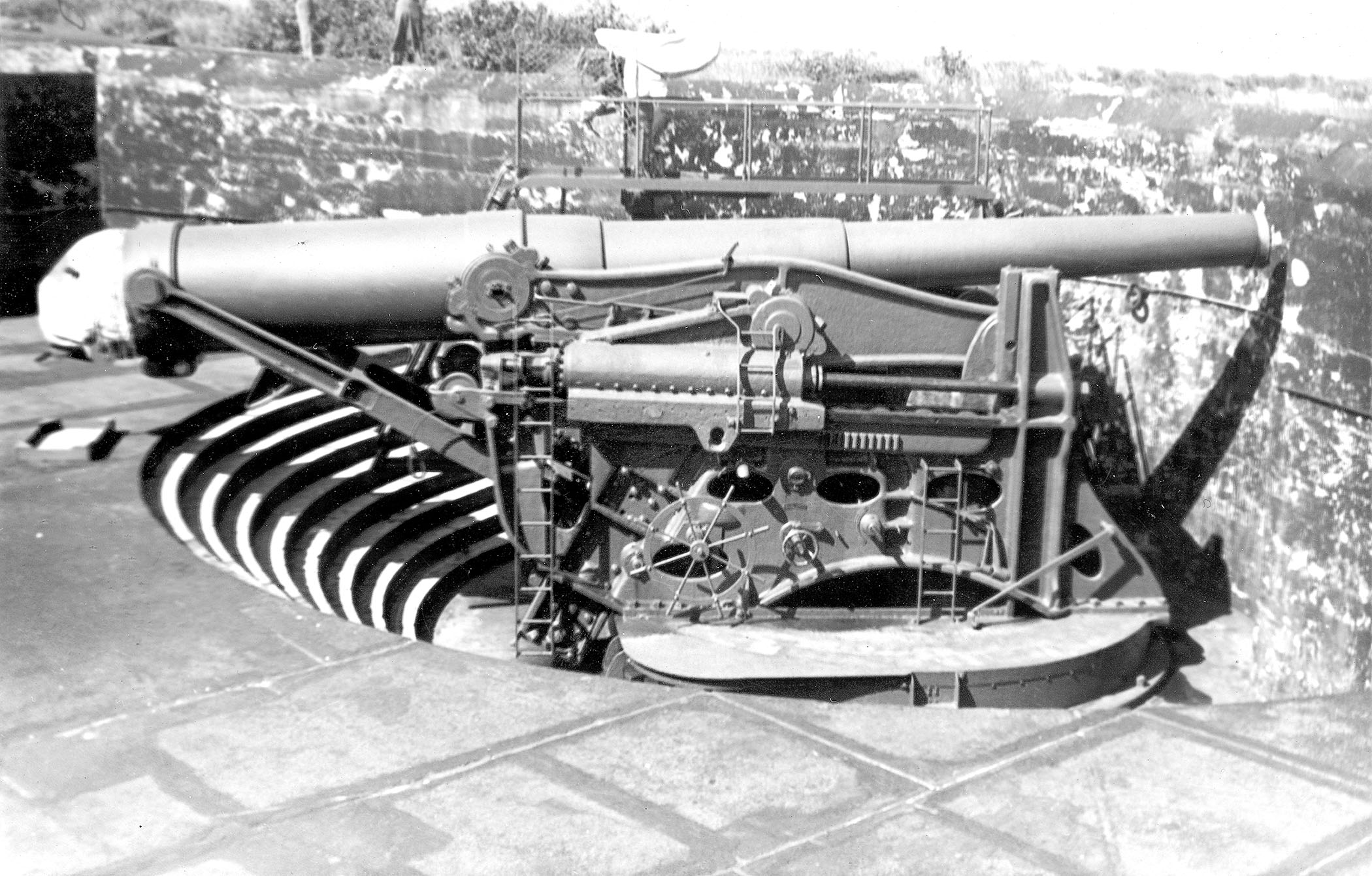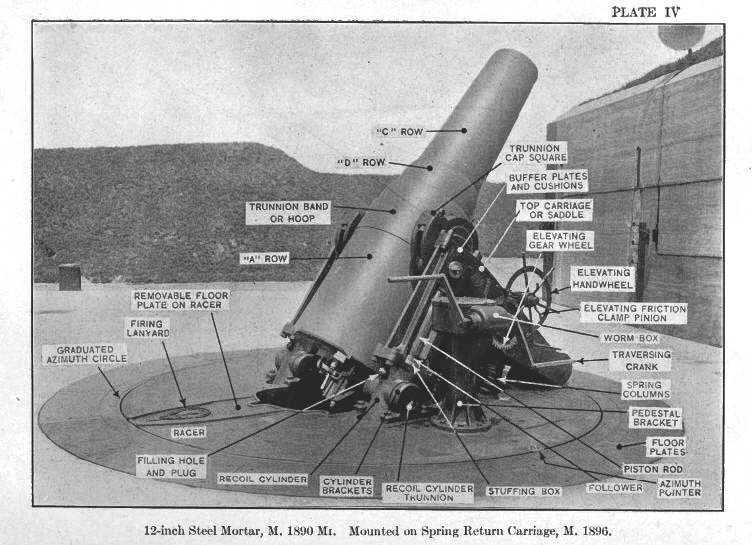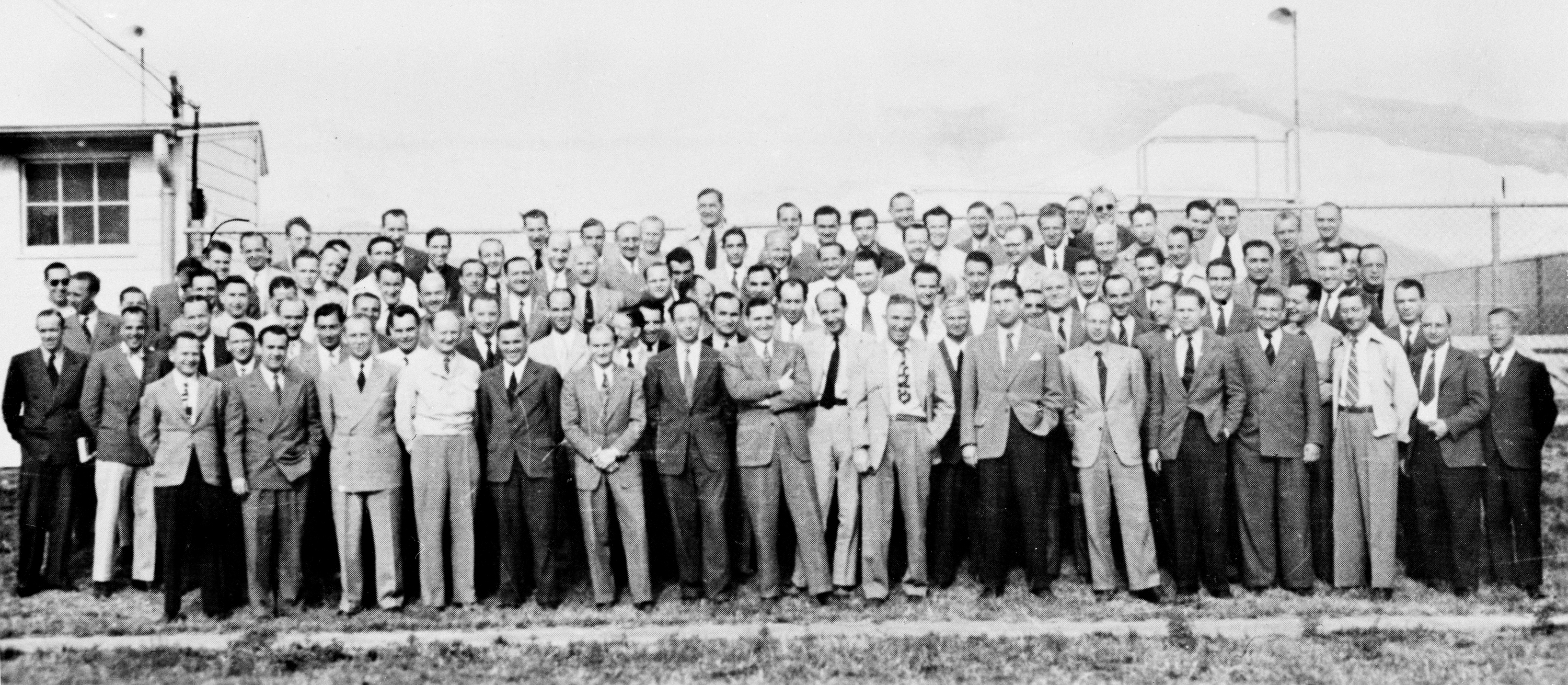|
Fort H. G. Wright
Fort H. G. Wright was a United States military installation on Fishers Island in the town of Southold, New York, just two miles off the coast of southeastern Connecticut, but technically in New York. It was part of the Harbor Defenses of Long Island Sound, along with Fort Terry, Fort Michie, and (in World War II) Camp Hero. These forts defended the eastern entrance of Long Island Sound and thus Connecticut's ports and the north shore of Long Island. The fort was named for Union General Horatio G. Wright, a former Chief of Engineers who was born in Clinton, Connecticut. The fort was first developed in the early 20th century and was active in the First and Second World Wars. After the Second World War, it was deactivated as a coast defense fort. History Construction and armament Fort H. G. Wright was built as part of the large-scale Endicott Program, which recommended a comprehensive replacement of existing coast defenses. The forts were designed and built by the Army Corp ... [...More Info...] [...Related Items...] OR: [Wikipedia] [Google] [Baidu] |
Harbor Defenses Of Long Island Sound
The Harbor Defenses of Long Island Sound was a United States Army Coast Artillery Corps Harbor Defense Command, harbor defense command. It coordinated the coastal defence and fortification, coast defenses of Long Island Sound and Connecticut from 1895 to 1950, beginning with the Board of Fortifications, Endicott program. These included both coastal artillery, coast artillery forts (all but two on islands in the sound) and Submarine mines in United States harbor defense, underwater minefields. The area defended included the approach via the Sound to New York City, the port cities and manufacturing centers of New London, Connecticut, New London, New Haven, Connecticut, New Haven, and Bridgeport, Connecticut, Bridgeport, and eventually included the Naval Submarine Base New London, submarine base and Electric Boat, shipyard in Groton, Connecticut, Groton. The command originated circa 1900 as an Artillery District, was renamed Coast Defenses of Long Island Sound in 1913, and again renam ... [...More Info...] [...Related Items...] OR: [Wikipedia] [Google] [Baidu] |
Chief Of Engineers
The Chief of Engineers is a principal United States Army staff officer at The Pentagon. The Chief advises the Army on engineering matters, and serves as the Army's topographer and proponent for real estate and other related engineering programs. The Chief of Engineers is the senior service engineer for the Department of Defense, responsible for integrating all aspects of combat, general and geospatial engineering across the Joint Force. The Chief of Engineers also commands the United States Army Corps of Engineers. As commander of the US Army Corps of Engineers, the Chief of Engineers leads a major Army command that is the world's largest public engineering, design, and construction management agency. This office defines policy and guidance, and it plans direction for the organizations within the Corps. The Chief of Engineers is currently a lieutenant general billet but in the past has been held by field grade officers as low as major. Civilian oversight of the Chief of Engine ... [...More Info...] [...Related Items...] OR: [Wikipedia] [Google] [Baidu] |
Disappearing Gun
A disappearing gun, a gun mounted on a ''disappearing carriage'', is an obsolete type of artillery which enabled a gun to hide from direct fire and observation. The overwhelming majority of carriage designs enabled the gun to rotate backwards and down behind a parapet, or into a pit protected by a wall, after it was fired; a small number were simply barbette mounts on a retractable platform. Either way, retraction lowered the gun from view and direct fire by the enemy while it was being reloaded. It also made reloading easier, since it lowered the breech to a level just above the loading platform, and shells could be rolled right up to the open breech for loading and ramming. Other benefits over non-disappearing types were a higher rate of repetitive fire and less fatigue for the gun crew. Some disappearing carriages were complicated mechanisms, protection from aircraft observation and attack was difficult, and almost all restricted the elevation of the gun. With a fe ... [...More Info...] [...Related Items...] OR: [Wikipedia] [Google] [Baidu] |
12-inch Gun M1895
The 12-inch coastal defense gun M1895 (305 mm) and its variants the M1888 and M1900 were large coastal artillery pieces installed to defend major American seaports between 1895 and 1945. For most of their history they were operated by the United States Army Coast Artillery Corps. Most were installed on disappearing carriages, with early installations on low-angle barbette mountings. From 1919, 19 long-range two-gun batteries were built using the M1895 on an M1917 long-range barbette carriage. Almost all of the weapons not in the Philippines were scrapped during and after World War II. History In 1885, William C. Endicott, President Grover Cleveland's secretary of war, was tasked with creating the Board of Fortifications to review seacoast defenses. The findings of the board illustrated a grim picture of existing defenses, and in its 1886 report recommended a massive $127 million construction program of breech-loading cannons, mortars, floating batteries, and submarine mines ... [...More Info...] [...Related Items...] OR: [Wikipedia] [Google] [Baidu] |
Daniel Butterfield
Daniel Adams Butterfield (October 31, 1831 – July 17, 1901) was a New York businessman, a Union general in the American Civil War, and Assistant Treasurer of the United States. After working for American Express, co-founded by his father, Butterfield served in the Civil War, where he was soon promoted brigadier general, and wounded at Gaines' Mill. While recuperating, he either wrote or re-wrote a popular bugle-call for burials, called '' Taps''. He commanded a division at Fredericksburg, and then became General Joseph Hooker's chief of staff for the Army of the Potomac, sharing both the credit for improved morale and responsibility for the licentious behavior that Hooker tolerated in camp. He also became embroiled in Hooker’s political feuds with Generals Ambrose Burnside and George Gordon Meade. When Meade took over the Army from Hooker, he attempted to replace Butterfield, but his chosen candidates preferred to stay in their current assignments, so Butterfield s ... [...More Info...] [...Related Items...] OR: [Wikipedia] [Google] [Baidu] |
Barbette
Barbettes are several types of gun emplacement in terrestrial fortifications or on naval ships. In recent naval usage, a barbette is a protective circular armour support for a heavy gun turret. This evolved from earlier forms of gun protection that eventually led to the pre-dreadnought. The name ''barbette'' ultimately comes from fortification: it originally meant a raised platform or mound, as in the French phrase ''en barbette'', which refers to the practice of firing a cannon over a parapet rather than through an embrasure in a fortification's casemate. The former gives better angles of fire but less protection than the latter. The disappearing gun was a variation on the barbette gun; it consisted of a heavy gun on a carriage that would retract behind a parapet or into a gunpit for reloading. Barbettes were primarily used in coastal defences, but saw some use in a handful of warships, and some inland fortifications. The term is also used for certain aircraft gun mounts. ... [...More Info...] [...Related Items...] OR: [Wikipedia] [Google] [Baidu] |
12-inch Coast Defense Mortar
The 12-inch coast defense mortar was a weapon of caliber emplaced during the 1890s and early 20th century to defend US harbors from seaborne attack. In 1886, when the Endicott Board set forth its initial plan for upgrading the coast defenses of the United States, it relied primarily on mortars, not guns, to defend American harbors. "Sea-Coast Mortar Fire", Report of a Board, in ''Journal of the United States Artillery'', Vol. 7, No. 3, 1897. Over the years, provision was made for fortifications that would mount some 476 of these weapons, although not all of these tubes were installed. Ninety-one of these weapons were remounted as railway artillery in 1918-1919, but this was too late to see action in World War I. The railway mortars were only deployed in small quantities, and none overseas. The fixed mortars in the Philippines saw action in the Imperial Japan, Japanese Philippines campaign (1941–1942), invasion in World War II. All of the fixed mortars (except four) in the Unit ... [...More Info...] [...Related Items...] OR: [Wikipedia] [Google] [Baidu] |
James Clinton
Major general (United States), Major-General James Clinton (August 9, 1736 – September 22, 1812) was a Continental Army officer and politician who fought in the American Revolutionary War. During the war he, along with John Sullivan (general), John Sullivan, led the 1779 Sullivan Expedition against the British-allied Iroquois. The Americans destroyed 40 villages as well as their winter stores of wheat and other produce. This forced 5,000 Iroquois to flee to British controlled Fort Niagara and caused the deaths of several hundred Iroquois during the harsh winter of 1779–1780. He subsequently obtained the rank of brevet major general. After leaving the army, Clinton was a founding member of the New York Society of the Cincinnati and served as an assemblyman in the New York State legislature and later as a New York State Senator from 1788 to 1792. Early life Clinton was born in Ulster County, New York, Ulster County in the colony of New York, at Little Britain, New York ... [...More Info...] [...Related Items...] OR: [Wikipedia] [Google] [Baidu] |
Dynamite Gun
A dynamite gun is any of a class of artillery pieces that use compressed air to propel an explosive projectile (such as one containing dynamite). Dynamite guns were in use for a brief period from the 1880s to the beginning of the twentieth century. Because of the instability of early high explosives, it was impractical to fire an explosive-filled shell from a conventional explosive-fired gun. The violent deflagration of the propellant charge and the sudden acceleration of the shell would set off the explosive in the barrel of the weapon. By using compressed air, the dynamite gun was able to accelerate the projectile more gradually through the length of the barrel. Guns for naval use were supplied with air from shipboard compressors. A small model for field use by land forces employed a powder charge to drive a piston down a cylinder, compressing air that was then fed into the gun barrel. This field model was famously used by Theodore Roosevelt's Rough Riders during the Spanish–Am ... [...More Info...] [...Related Items...] OR: [Wikipedia] [Google] [Baidu] |
United States Army Coast Artillery Corps
The U.S. Army Coast Artillery Corps (CAC) was an administrative corps responsible for coastal, harbor, and anti-aircraft defense of the United States and its possessions between 1901 and 1950. The CAC also operated heavy and railway artillery during World War I. History As early as 1882 the need for heavy fixed artillery for seacoast defense was noted in Chester A. Arthur's Second Annual Message to Congress where he noted: In 1885 the Endicott Board was convened under the subsequent Grover Cleveland administration, chaired by Secretary of War William Crowninshield Endicott. This board recommended a large-scale program of harbor defenses at 29 ports, including guns, mortars, and mine fields. Most of their recommendations were implemented and new defenses were constructed by the United States Army Corps of Engineers between 1895 and 1905. As the defenses were constructed, each harbor or river's installations were controlled by Artillery Districts, renamed Coast Defen ... [...More Info...] [...Related Items...] OR: [Wikipedia] [Google] [Baidu] |
United States Army Ordnance Corps
The United States Army Ordnance Corps, formerly the United States Army Ordnance Department, is a Combat service support (United States), sustainment branch of the United States Army, headquartered at Fort Gregg-Adams, Fort Gregg-Adams, Virginia. The broad mission of the Ordnance Corps is to supply Army combat units with weapons and ammunition, including at times, their procurements and maintenance. Along with the Quartermaster Corps (United States Army), Quartermaster Corps and Transportation Corps, it forms a critical component of the U.S. Army logistics system. The U.S. Army Ordnance Corps mission is to support the development, production, acquisition, and sustainment of weapon systems, ammunition, missiles, electronics, and ground mobility materiel during peace and war to provide combat power to the U.S. Army. The officer in charge of the branch for doctrine, training, and professional development purposes is the Chief of Ordnance of the United States Army, Chief of Ordnance ... [...More Info...] [...Related Items...] OR: [Wikipedia] [Google] [Baidu] |
United States Army Corps Of Engineers
The United States Army Corps of Engineers (USACE) is the military engineering branch of the United States Army. A direct reporting unit (DRU), it has three primary mission areas: Engineer Regiment, military construction, and civil works. USACE has 37,000 civilian and military personnel, making it one of the world's largest public engineering, design, and construction management agencies. The USACE workforce is approximately 97% civilian, 3% active duty military. The civilian workforce is mainly located in the United States, Europe and in select Middle East office locations. Civilians do not function as active duty military and are not required to be in active war and combat zones; however, volunteer (with pay) opportunities do exist for civilians to do so. The day-to-day activities of the three mission areas are administered by a lieutenant general known as the chief of engineers/commanding general. The chief of engineers commands the Engineer Regiment, comprisi ... [...More Info...] [...Related Items...] OR: [Wikipedia] [Google] [Baidu] |








